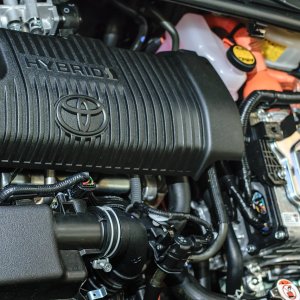
MAR21 - State of the Industry: Aftermath of a Historic Year
 By Alejandro Enríquez | Journalist and Industry Analyst -
Tue, 03/23/2021 - 06:00
By Alejandro Enríquez | Journalist and Industry Analyst -
Tue, 03/23/2021 - 06:00
Industry leaders remain optimistic about the role Mexico will play as a world-class automotive hub. Although auto parts and vehicle production took a hit due to the pandemic and recent semiconductor and natural gas shortages, USMCA is consolidating nearshoring trends in a region where global players from Asia to Europe are setting a strong manufacturing footprint. "Today, we are at a turning point. However, we are pushing to carry on with the commitments we have made so far," said Fausto Cuevas, Director General of AMIA.
The country's automotive milestones are many. The automotive sector contributes 3.8 percent of Mexico's GDP and 20.5 percent of its manufacturing GDP, while creating more than 1.9 million direct jobs. There are around 30 manufacturing facilities for engines, light and heavy vehicles in 12 states of the country. At the global level, Mexico is the sixth-leading motor vehicle producer in the world and the first in Latin America. The country is the fourth-largest vehicle exporter, the first in tractor trucks and the fifth-biggest auto parts producer. The country is also home to 2,361 new-vehicle dealerships.
Light Vehicles
Light-vehicle production remains the cornerstone of the Mexican automotive industry. Over the last 10 years, OEMs ramped up vehicle production mostly to supply the North American market. Kia, Toyota, Audi, Mazda, BMW, JAC, Fiat – with the creation of the FCA Group in 2014 – and now Stellantis have arrived with a long line of suppliers behind them. Today, 14 companies report production numbers to INEGI and AMIA. Overall, both production and exports were impacted by lockdown measures and supply chain disruptions, dropping 20.2 and 21 percent, respectively. In the domestic market, sales plummeted 28 percent in 2020 compared to 2019.
Heavy Vehicles
A variety of trends, both positive and negative, impacted the sector in 2020. First, the overwhelming lack of operational capacity in new plating created a bottleneck that affected sales greatly. The decline in tourism and reduced mobility across cities were also debilitating factors. E-commerce, on the other hand, boosted sales for last-mile delivery vehicles. The pandemic brought substantial drops in sales, exports, imports and production. Compared to 2020, production dropped 32.5 percent, exports 31.4 percent, imports plummeted 48.9 percent and sales fell almost 38 percent. "For an economic recovery, we need to bet on vehicle renewal. This will support the sector horizontally," said President of ANPACT Miguel Elizalde.
Electrification and Green Vehicles
As OEMs work decisively toward achieving carbon neutrality, green vehicles are increasingly becoming part of their portfolio. When it comes to sales, electric, plug-in hybrid and hybrid light vehicles have consistently increased their share in Mexico’s total sales, going from 0.5 percent in 2016 to above 2.1 percent in 2020. Even despite the pandemic, plug-in hybrids and EV sales have increased year-on-year, uninterruptedly. As for commercial vehicles, only a few companies produce natural gas, gasoline and electric trucks and buses in the country and 98 percent of these go to the US market. As for the domestic market, just two brands are betting on natural gas and hybrid vehicles, which represented 7.6 percent of total commercial vehicle imports in 2020.
Supply Chain Evolution
Last year, supply chains were forced to demonstrate resilience and adaptability to avoid disruption, securing inventory and guaranteeing logistics continuity. "2020 was a historic year when everyone was forced to innovate," said Antonio López, President of ARIDRA. The Mexican automotive sector was dependent on Chinese and Southeast Asian imports for specific components, mainly tooling and plastics. With the fragility of global supply chains exposed, industry leaders agreed the pandemic accelerated a trend toward regionalization. Nearshoring is the buzzword to define relocating production operations closer to where consumer markets are. In the country, large Tier 1 players either expand their operations in the country or ramp up production, while Tier 2 suppliers are further developed to meet RVC requirements established in USMCA.
The challenge to balance the economic impact and virus outbreaks forced governments to end lockdowns and companies to operate under strict health standards. Companies implemented social distancing measures and consequently accelerated the implementation of smart manufacturing strategies. Meanwhile, at the global level, automakers announced unprecedented commitments toward carbon neutrality that will also drive suppliers to meet more thorough environmental standards. In short, the sector is witnessing the forging of a safer, smarter and more sustainable supply chain. "We were proactive in the most challenging situation the automotive market has faced in more than 80 years," said Guillermo Rosales, Director General of AMDA.
Digital Sales
Digital channels are the new normal. As the pandemic accelerated e-commerce, materializing a leap that was expected to take years, the automotive industry embraced the challenge of digital sales through diverse strategies, from partnerships with large e-commerce players and banks to extensive training programs focused on the online sales channel. Dealerships are no longer in the business of selling but also creating content. For dealerships to be successful two elements should be addressed: immediacy and transparency. Dealers should focus on the experience of a customer that is not restrained by a schedule while providing all the necessary material to generate trust in the sales process.
2020 also witnessed the emergence of Kavak, the first Mexican "unicorn," achieving a valuation above US$1 billion. Kavak's business model is based on an online platform to purchase and sell used vehicles, a segment that had been left mostly to informal transactions. In an effort to catch up with an accelerated digitalization, brands are strengthening their digital channels.
















